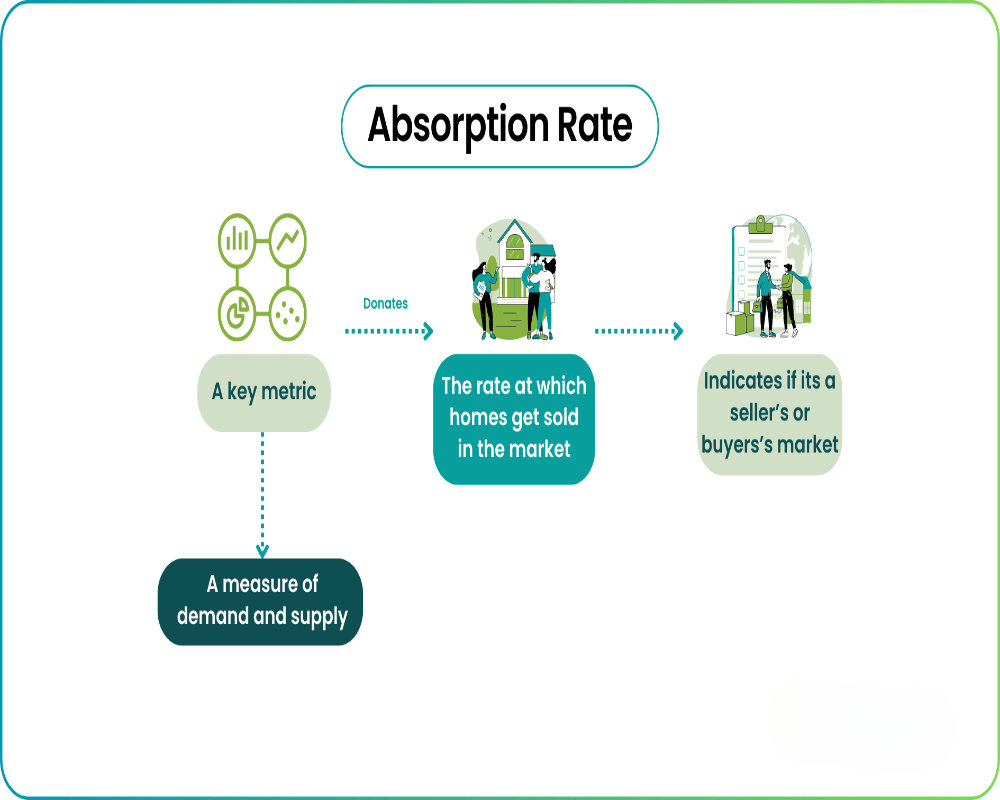Introduction
In the realm of commercial real estate, the absorption rate is a critical metric that helps investors, developers, and brokers assess market performance and predict future trends. This concept reflects how quickly available commercial spaces are being leased or sold within a given market over a specific period. The absorption rate not only signals the demand for commercial properties but also guides strategic decisions regarding pricing, development, and investment timing. Understanding this rate offers a window into the market’s health and momentum.
Definition and Basic Calculation
The absorption rate in commercial real estate refers to the rate at which available properties are being occupied over a specific time frame, typically measured in months or quarters. It is calculated by dividing the total square footage of commercial space leased or sold during a period by the total available space at the beginning of that period. The result, expressed as a percentage or square footage per time unit, indicates whether supply is being absorbed at a fast or slow pace.
For example, if a city has 1 million square feet of available office space at the start of the quarter, and 200,000 square feet are leased during that quarter, the absorption rate is 20 percent. This figure illustrates how robust the demand is in that particular market segment.
Types of Absorption in Commercial Real Estate
Absorption in commercial real estate is typically categorized into two types: gross absorption and net absorption. Gross absorption represents the total amount of space that has been leased over a given period, regardless of whether tenants are vacating other spaces. Net absorption, however, accounts for both the new leases and the space vacated during the same period. Net absorption provides a more accurate reflection of whether the overall occupancy level in the market is growing or declining, making it a more widely used indicator for strategic decisions.
Market Insights Derived from Absorption Rate
The absorption rate serves as a powerful tool for interpreting broader market dynamics. A high absorption rate suggests strong demand, limited vacancy, and potentially rising rental prices. It may also signal a favorable environment for new developments, as existing inventory is being consumed rapidly. Conversely, a low or negative absorption rate could indicate an oversupply of space, weakening demand, or economic slowdowns, prompting developers and investors to reconsider or delay new projects.
Understanding the absorption rate also helps in comparing different asset classes and geographical areas. For instance, the office market in one city may show declining absorption due to hybrid work trends, while industrial space in the same city might experience high absorption because of the surge in e-commerce. These distinctions help in portfolio diversification and targeted investment strategies.
Impact on Pricing and Leasing Strategies
Leasing agents and property owners rely on absorption rate data to adjust pricing strategies. In a market with high absorption, landlords may raise lease rates or offer fewer concessions, knowing that demand is strong. In contrast, in a slow market, incentives such as rent-free periods or tenant improvements may be necessary to attract occupants. For developers and financiers, understanding absorption trends can influence how projects are phased, marketed, or priced for entry and exit strategies.
Regional and Economic Considerations
Absorption rates are also sensitive to broader economic conditions and regional factors. Economic growth, employment trends, population shifts, infrastructure development, and policy changes all influence commercial demand. A city experiencing rapid industrial expansion will likely see higher absorption rates in warehouse and logistics sectors. On the other hand, a region affected by economic contraction may show stagnating or negative absorption across multiple property types.
Conclusion
The absorption rate is a vital indicator of supply and demand dynamics in commercial real estate markets. By analyzing how quickly properties are being leased or sold, stakeholders gain valuable insights into current market conditions, future trends, and risk exposure. From guiding development decisions to shaping leasing strategies and investment planning, the absorption rate functions as a central benchmark for performance and opportunity. As commercial real estate continues to evolve, maintaining an informed understanding of this metric is essential for navigating and succeeding in a competitive market environment.
Hashtags
#AbsorptionRate #CommercialRealEstate #CRE #RealEstateInvesting #MarketTrends #PropertyManagement #RealEstateAnalysis #InvestmentStrategy #CommercialProperties #RealEstateMarket #VacancyRates #LeasingTrends #RealEstateDevelopment #MarketInsights #PropertyInvestment #CommercialLeasing #RealEstateNews #InvestmentOpportunities #CRETrends #RealEstateEducation


